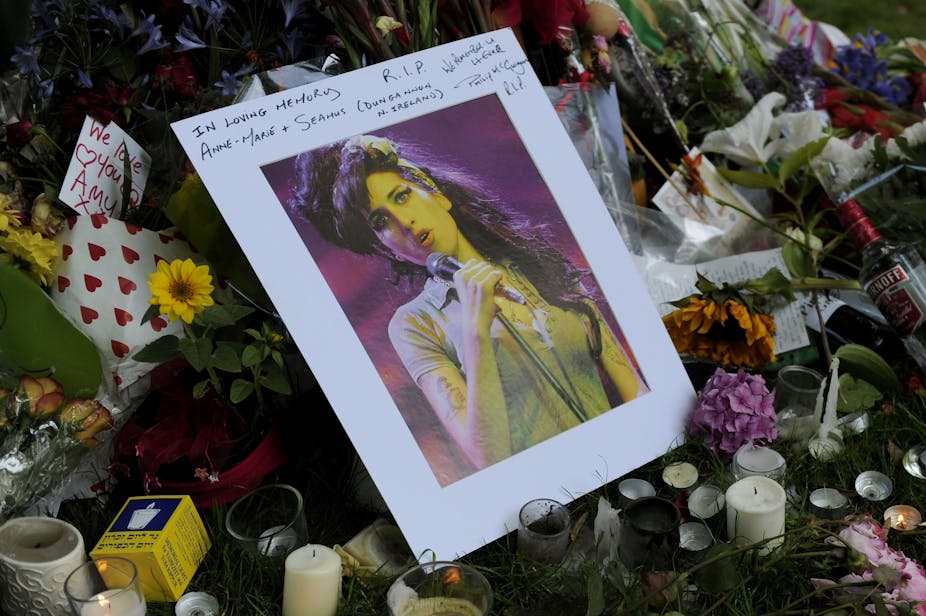It’s a cliché to say that we like em’ dying young. Marilyn Monroe, James Dean, Jimi Hendrix, Janis Joplin. A cliché, yes, but a beseeching one nevertheless.
Amy Winehouse’s death over the weekend – untimely sure, but no jaw-dropper – allowed her entry to a dodgy little clique known as the 27 Club. Sounding more like an industrial estate bordello than a members only lodge, the Club boasts members like Hendrix, Joplin, Jim Morrison and Kurt Cobain.
A Club memorialising the oh so mysterious age they died. Understanding the popular fetish for celebrity deaths seems relatively obvious. The appeal of perpetual youth. The avoidance of the old and ugly corpse. The legacy of a spectacular death rather than a fade-to-obscurity disappearance.
Membership mandates death at 27, but there’s another less mathematical requirement too. Long-suffering artists need only apply. Talented, tortured, tending to their tribulations by tempting fate. Any artist worth their salt bleeds – preferably literally – for their work; all over their work if at all possible.
Winehouse had a pretty good voice, no arguments there. Much better than her voice however, was the train wreck of her life. The torn stockings, the hedgerow hair, the drunken gutter crawls. The paparazzi bided their time knowing it could only ever end badly. And end badly it did. Sure, she cut ahead of Charlie Sheen, but TMZ had been waiting for this day for a while.
But aside from Winehouse herself and the people who actually knew her to love her, there are few losers here. Her death simply provided yet another deity for the celebrity death industry. An industry we lap up with greed and gusto.
Part of the simplistic appeal of celebrities is that they’re living the lives we don’t get to. They’re the ones getting paid to sing badly in Belgrade; to earn an income ranting about tiger blood. We’re just the ones at home, watching, living vicariously and eating jaffles.
Just as we watch porn showing the sex we’d never try at home, watch car races with drivers clocking speeds we’d never dare, just as we watch shows like Dexter savouring in the justice we’d never ever deliver ourselves, the celebrity death provides us arms-length access to the live fast, die young life of extremes: we don’t really want it, but in our fantasies we dream of at least tasting it.
For the youngsters preoccupied with drama, angsty poetry and documenting woes on Facebook, created are icons for worship of the bible-free kind. For the slightly older, trips to the Père Lachaise cemetery to see where Jim’s buried; to New York’s 23rd Street to see where Janis gave Leonard a little oral, provide palatable pilgrimage, nostalgia a’plenty and a place to ponder anomie.
Those died-young celebrities don’t have to battle ageing, don’t have to battle mid-life-crises, don’t have to live each day wondering whether there’s any point to it all. They left the party before the esky emptied.
More interesting than Winehouse’s life however, certainly more interesting than her death, is her being anointed to a club of people of people celebrated purely for the age they combusted rather than any of the art they produced. Sure, the art gives an excuse for the reverence, but it’s really the early exit we’re fascinated by.
Little deaths over big deaths. Kinda creepy, sure, but of the wide spectrum of fetishes on offer, that the death one grips so many of us mortals seems hardly alarming.

